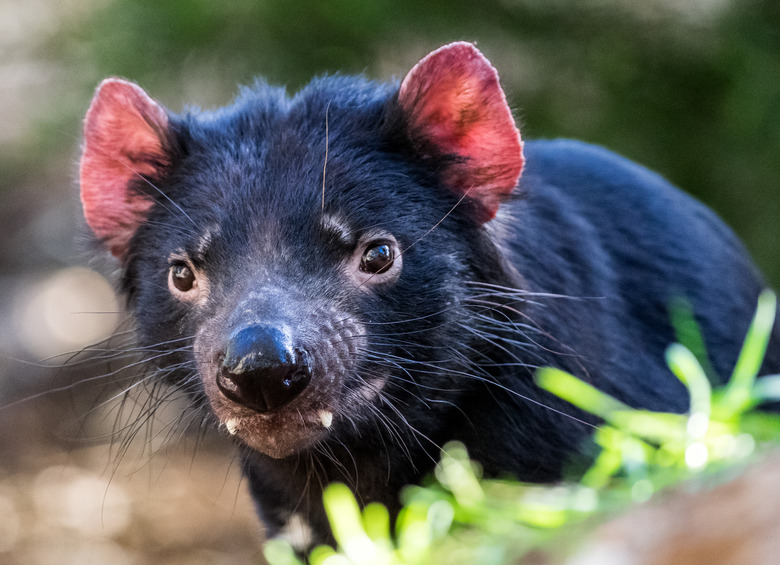What Eats Or Kills A Tasmanian Devil?
Tasmanian devils have only a few remaining natural predators. The main threats to these animals come from diseases, introduced species and ongoing human activities. The biggest and most obvious hunter of Tasmanian devils, the Tasmanian tiger, became extinct many years ago. Tasmanian devils used to inhabit much of mainland Australia but are now confined entirely to the island of Tasmania.
Mammals
Mammals
Tasmanian devils are no longer found in mainland Australia, and this is probably due to another mammal. Asian dogs or dingoes were probably introduced to Australia several thousand years ago and have flourished since. The Tasmanian tiger or thylacine was a large carnivore that almost certainly ate Tasmanian devils, as its prey included various other mammals of a comparable size. However thylacines were likely hunted to extinction, with the last individual dying in a zoo in 1936. Reports of sightings since are unconfirmed and even if a few individuals have survived, they wouldn't constitute a serous threat to Tasmanian devils. In Tasmania, the two species of quoll, catlike marsupials, may take juvenile devils or imps. Introduced carnivores including foxes, cats and domestic dogs may also take unprotected imps, although they are unlikely to hunt adults. If food is extremely short, adult Tasmanian devils, especially unrelated ones, could be another threat to the imps.
Birds
Birds
Birds of prey such as owls and eagles can and do eat imps. Since owls hunt at night and other raptors during the day, there is no safe time for very small individuals. With a weight of about 26 pounds and a length of 12 inches, adults are too big and heavy.
Disease
Disease
Partly because Tasmanian devils are now restricted to a small geographical area, diseases can spread through their populations rapidly. From the 1990s, devil facial tumor disease has killed tens of thousands of the animals, primarily from starvation because the tumors make it near impossible for afflicted animals to eat. The disease is one of the very few contagious cancers and spreads rapidly. More than two-thirds of the devils have died, putting an already endangered animal at risk of extinction.
Human Activity
Human Activity
During the 19th and early 20th centuries, determined efforts were made to exterminate Tasmanian devils because they were viewed as a threat to livestock. They became a protected species in 1941 but still face threats from habitat destruction, competing against introduced animals such as foxes and cats, and collisions with vehicles. The last kills about 2,000 Tasmanian devils a year.
Cite This Article
MLA
Willson, Judith. "What Eats Or Kills A Tasmanian Devil?" sciencing.com, https://www.sciencing.com/eats-kills-tasmanian-devil-8047070/. 13 March 2018.
APA
Willson, Judith. (2018, March 13). What Eats Or Kills A Tasmanian Devil?. sciencing.com. Retrieved from https://www.sciencing.com/eats-kills-tasmanian-devil-8047070/
Chicago
Willson, Judith. What Eats Or Kills A Tasmanian Devil? last modified March 24, 2022. https://www.sciencing.com/eats-kills-tasmanian-devil-8047070/
